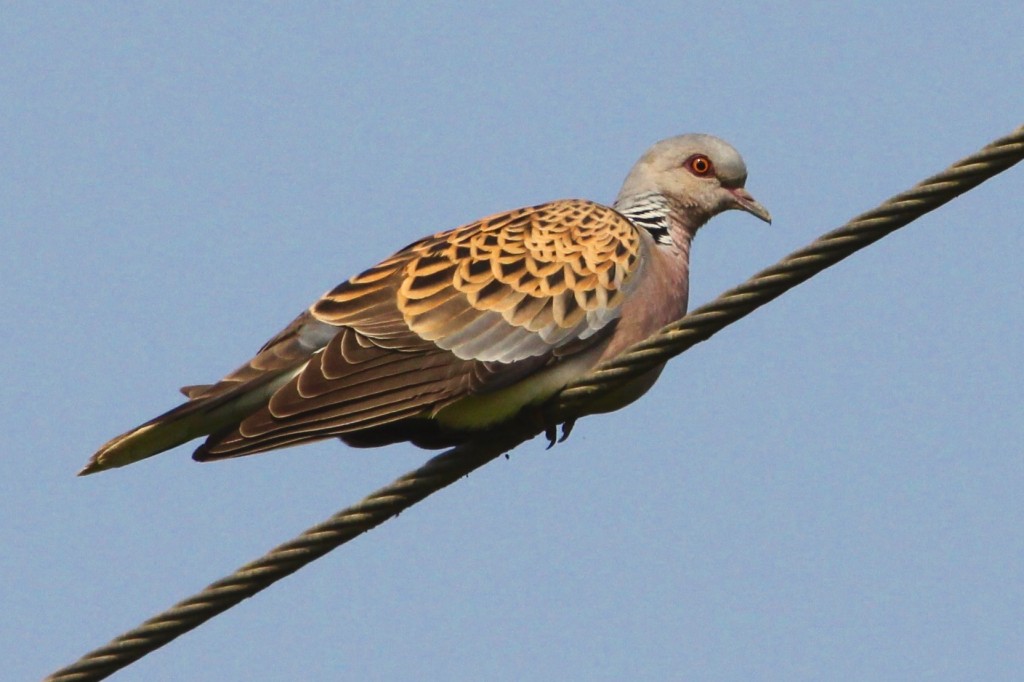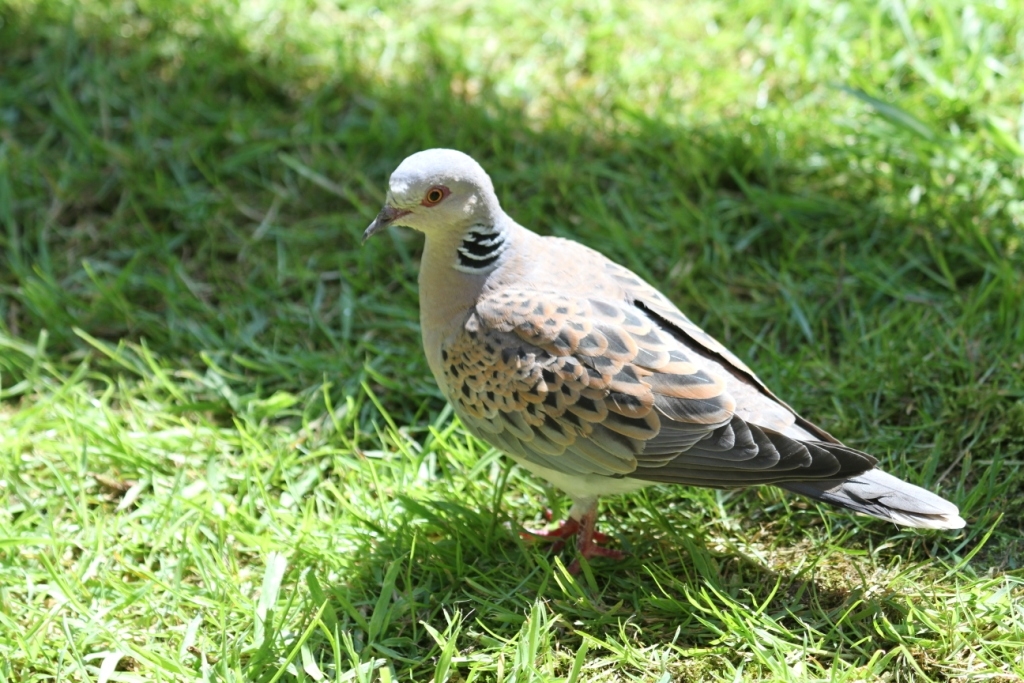The European turtle dove is one of four UK birds to join the list of species considered to be facing global extinction after the latest annual revision of birds on the IUCN Red List Endangered Species was announced by BirdLife International on behalf of the IUCN today (Thursday 29th October).

In the UK, East Anglia is one of the last remaining areas where turtle doves continue to breed. Over half of the remaining UK population of turtle doves can be found in the Eastern Region, with the vast majority of the others found in South East England.
Conservation organisations in the Operation Turtle Dove partnership are working hard to secure a future for turtle doves in this country.
Turtle doves, already a UK Red List species due to the shocking loss of more than nine out of every ten birds in this country over the last 50 years, were formerly a familiar summer visitor to much of Europe including the south and east of England. Declines across Europe of more than 30 per cent over the past 16 years have now seen its global threat status rise from ‘Least Concern’ to ‘Vulnerable’, placing it in the same extinction threat category as species like the African elephant and lion. Scientists from the RSPB and other BirdLife International partners are trying to establish the reasons for the decline in the UK and Europe.
John Sharpe, the RSPB’s Conservation Manager in Eastern England, said: “The news of the increased threat of extinction to turtle doves is not wholly unexpected, but it does throw into sharp relief the dire situation these birds face and the urgency of joined-up conservation efforts across their range if we are to save them.
“Here in East Anglia, we are working closely with farmers to help create feeding habitat for the birds in the countryside, but as migratory turtle doves only spend a few months of the year in the UK, conservation efforts are also being directed at their wintering grounds in Africa and along their migration route.
“The good news is that we have seen similar population declines reversed, so there is still hope. The stone-curlew, which came close to extinction in the UK in the 1980s, has seen its fortunes reversed thanks to work by the RSPB together with landowners and conservation partners, which has seen the bird’s population in the UK treble in the last 30 years.”
Across the Eastern Region, the RSPB offers year round telephone advice to farmers on how to create a home for species such as turtle doves on their land whilst maintaining a successful farming business. RSPB advisers can also visit farms across the Fens, the Brecks and many areas in Essex and Suffolk, to provide wildlife friendly farming advice, including planning Countryside Stewardship options. Landowners can apply for funding from Countryside Stewardship schemes to introduce wildlife friendly areas on their sites from January 2016.
 Other East Anglian birds affected by this year’s revision of the global Red List include several waders, such as the European lapwing, knot, and bar-tailed godwit, all of which have been added to the list of globally ‘Near Threatened’ species, meaning that any further decline in their fortunes will result in them too joining turtle doves in the ‘Vulnerable’ category.
Other East Anglian birds affected by this year’s revision of the global Red List include several waders, such as the European lapwing, knot, and bar-tailed godwit, all of which have been added to the list of globally ‘Near Threatened’ species, meaning that any further decline in their fortunes will result in them too joining turtle doves in the ‘Vulnerable’ category.
This year’s update doubled the total number of UK birds on the Red List of Endangered Species and added nine birds to the Near Threatened category.
You can read more about the turtle dove and the other bird species that have been added to the Red List at the links below:
http://www.rspb.org.uk/news/409040-puffin-and-turtle-dove-added-to-birds-facing-global-extinction
http://blx1.bto.org/birdtrends/species.jsp?year=2014&s=turdo








